Image
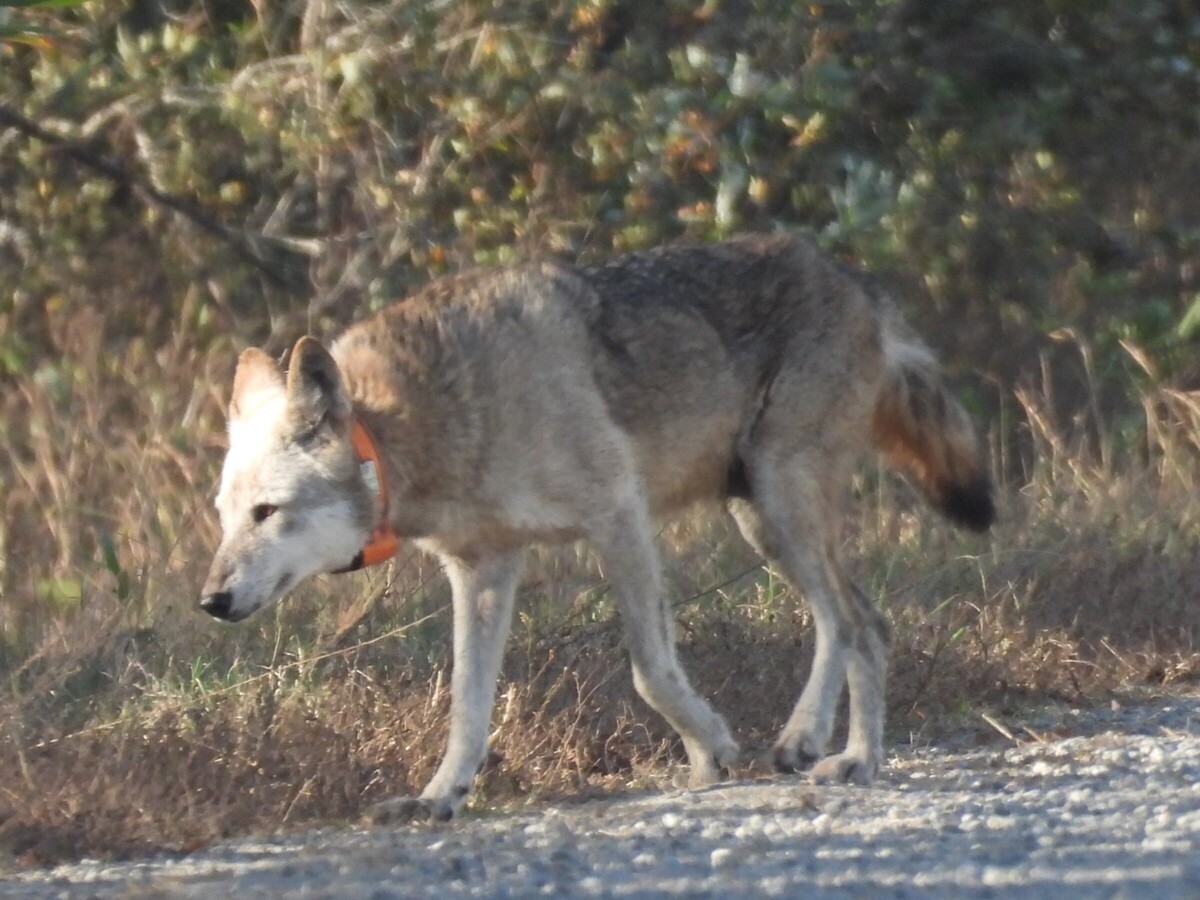
by Michael Strzelecki*
White Face is the oldest of the 19 remaining red wolves in the wild. She’s the matriarch of a pack that freely roams the boggy Alligator River National Wildlife Refuge, in North Carolina. White Face radiates beauty, with a sharp gray coat enhanced by red patches. But her gaunt body hints to a hard-lived life, struggling to keep her pack alive. Her whitish gray muzzle exudes not only age, but wisdom and stamina.
On a recent visit to Alligator River, I had the supreme fortune of sharing a fleeting, but intimate, face-to-face moment with White Face.
The Alligator River refuge sprawls across 238 square miles of coastal North Carolina. One would think that the last remaining pack of red wolves in the world would be hidden far from the public’s eye - in the upper reaches of a Rocky Mountain canyon, or nomading across vast swaths of hidden prairie. In fact, White Face and her wolfpack prowl about on a large estuarine peninsula, just across Pamilco Sound from the wildly popular Outer Banks beach resorts.
Alligator River may be home to the red wolves, but its headlining act is the black bears. It has the highest concentration of black bears in the United States. And rotund bears, too. The U.S. Fish and Wildlife plant expansive fields of corn, soy, and peanuts across the refuge to keep the bears nourished year-round. The largest black bear ever recorded, all 880 pounds of him, came from Alligator River. This is what tourists and naturalists and photographers come to Alligator River to see.
On a recent visit to the Outer Banks, I planned to spend a morning at Alligator River photographing bears. I was aware that red wolves prowled the refuge. Hundreds of square miles of the refuge, however, are off-limits to the public and this is where the wolves have historically dwelled. Out of view, out of mind.
Upon arrival, I noticed more cars than usual parked along the wide fields, and several vans with platforms built atop their roofs. People stood on these rooftop platforms scanning brushy fields with scopes and binoculars. A young Pennsylvania man sporting a flannel shirt and impressive camera gear - a self-described wolf enthusiast - told me that some of the red wolves have moved into the publicly accessed tracts of the refuge and people were seeing glimpses of them here and there - at the far ends of fields, clambering up a grassy hill, crossing a road. My attention turned immediately to seeing - and hopefully photographing - a rare red wolf.
For two days I plied the rough, sandy roads of the refuge in my car, creeping along at 10 miles per hour. I would show up each morning 30 minutes before sun-up, hoping to see a pair of haunting wolf eyes staring at me in my high beams. I would return at dusk hoping to glimpse a wolf scouring a field for a bedtime snack. No luck. I was fortunate to see lots of bears rooting for food in the fields and meandering across back roads, but my eyes were on the prize and there were no wolves seen.
On the second evening, after striking out once again, I headed home. On my final turn out of the refuge, before reaching the highway, I glimpsed at what appeared to be a stray dog standing on the road about 100 feet in front of my car. Or perhaps a coyote. I crept slowly ahead, hoping to get a better handle of what I was seeing. The creature held its ground as I approached, showing more inquisitiveness than fear. I stopped about 20 yards short, peering out my car window.
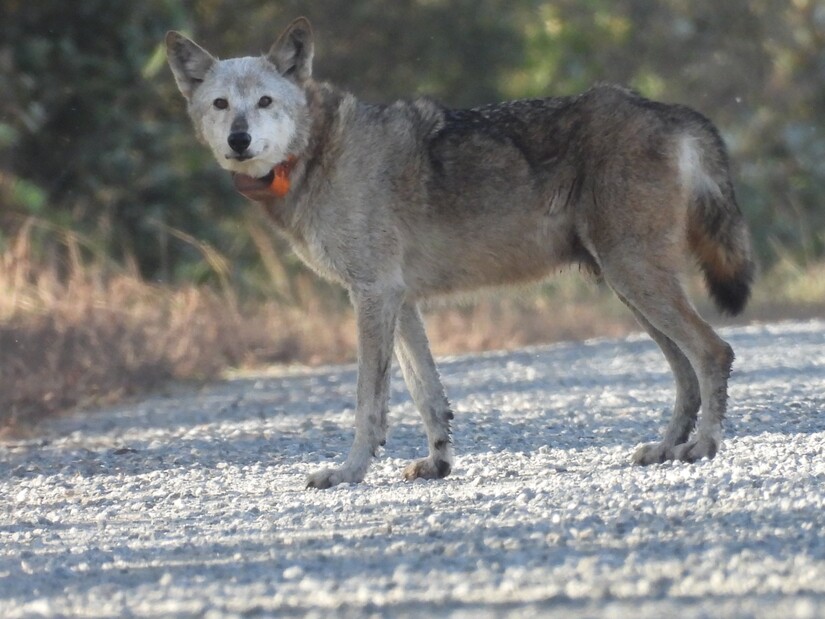
It quickly became clear that I was standing face-to-face with an adult red wolf. She was larger than a coyote and had the telltale red fur patch around her nape. Her tail was tipped black. She was thin but appeared otherwise happy and healthy. She wore a bright orange collar, put on by Fish and Wildlife personnel. Almost all red wolves in the wild are tranquilized and fitted with this collar. It keeps them alive. It serves notice to coyote poachers that these are endangered animals and not pests. It makes them more noticeable when crossing roads.
We were at a standstill. She was holding her ground and sizing me up, more out of curiosity. I was emotionally swept up in the fact that I was witnessing up close one of the rarest creatures on earth. After about a minute, my privilege had ended. She swung around and slowly walked down the road away from my car. She inexplicably waded through some high grasses and thorny shrubs alongside the road, returned to the road, and wandered until she became the size of a thumbnail, then a pinhead, and then she completely disappeared into the horizon. Later, showing pictures I took to a local naturalist, I learned that this particular red wolf was a grandmother the locals refer to as White Face.
I returned the next morning with my wife and friends. We were hoping for a repeat performance from White Face, but understood that the odds were not in our favor with such secretive creatures. We did some research the night before and found that there were about 150 red wolves roaming the refuge about 15 years ago, but lack of management and conservation saw the numbers drop to about seven in recent years. Most fell victim to poachers, fast drivers, and disease. It took a lawsuit from a conservation group for the refuge to regroup and develop a new management plan for the red wolves, which is showing early success.
Not seeing any wolves, we turned our attention to bears. While scanning a soybean field for the mammoth ursines, my wife noticed a small animal in the crop peeking at us over the two-foot-high soybean plants. A fox, perhaps? Then two more similar heads popped up nearby. We noticed the reddish coloration around the napes and immediately knew we were looking at red wolf pups. We watched the three playfully scamper through the soy, popping their heads up here and there like a whack-a-mole game. They would disappear in the vegetation for a few minutes and then reappear elsewhere.
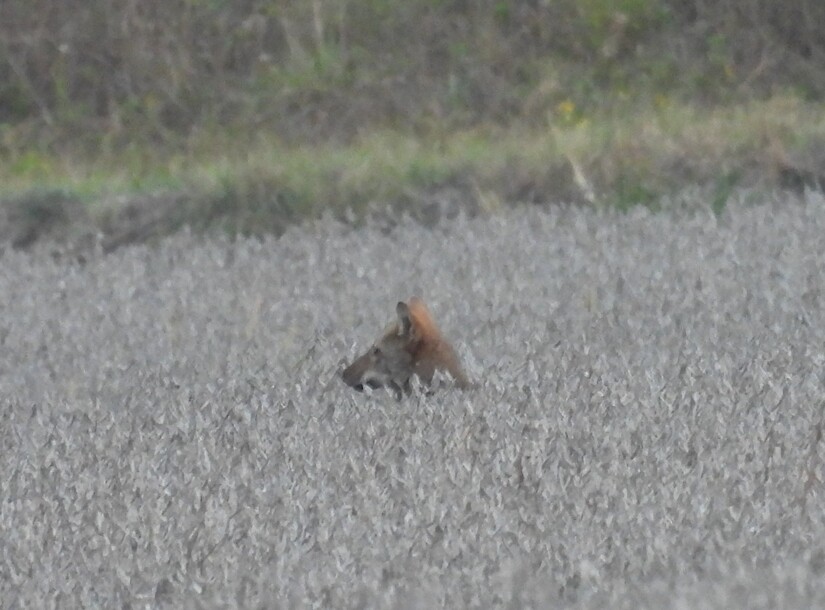
We spent 15 minutes following the wolf pups, wondering where the parents were. Thanks to the keen eyes of my wife, we got our answer. On top of a 20-foot grassy hill overlooking the field, hidden in shadows, sat what appeared to be the pups’ mother. She would rest on her haunches to watch them play. When they strayed too far, she would rise and move closer to their new spots and sit back down. She was attentive to the pups and kept a sharp eye on the handful of us observing. It was a surreal way to pass an hour and we all understood the gravity and honor of seeing four of the 19 remaining wild red wolves.
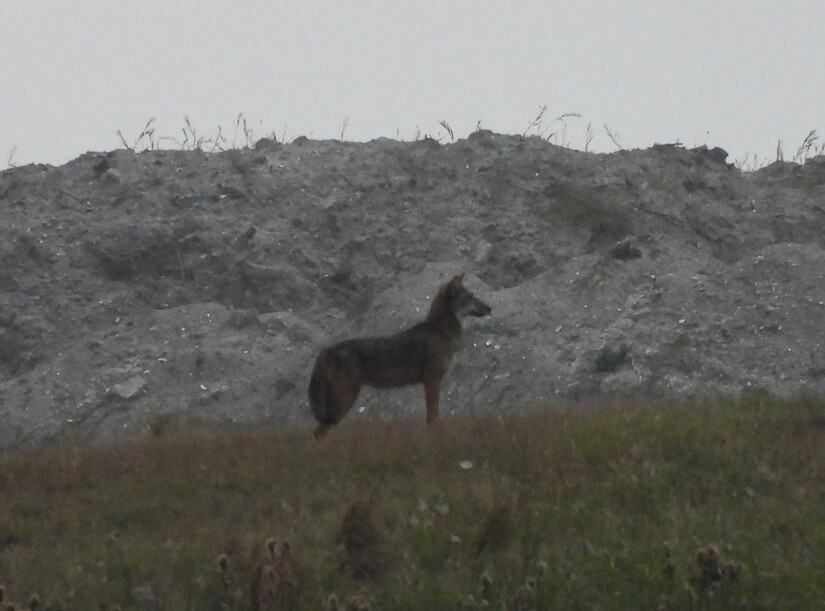
The remainder of our refuge visits involved bear sightings. We watched them swim across deep creeks and lumber down back roads. We laughed as they cruised through soybean fields with just their backs showing above the plant-tops, appearing like shark fins slicing through the ocean. At one point, I was watching a 500-pound behemoth across a small canal, irritated and bothered by something I did not understand. A local naturalist approached me and said that I was standing right where this particular bear likes to cross the road. He asked that I back up a few steps. I did so, and the bear proceeded across the canal and strode past me, perhaps ten yards away. Of all the bears I have encountered in the wild, that one came closest to me, and was probably my largest observed black bear of record.
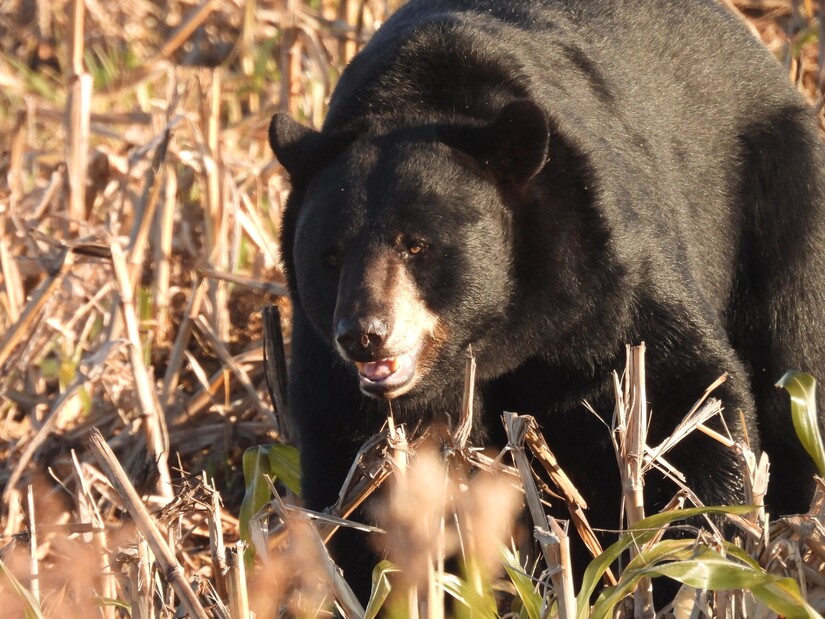
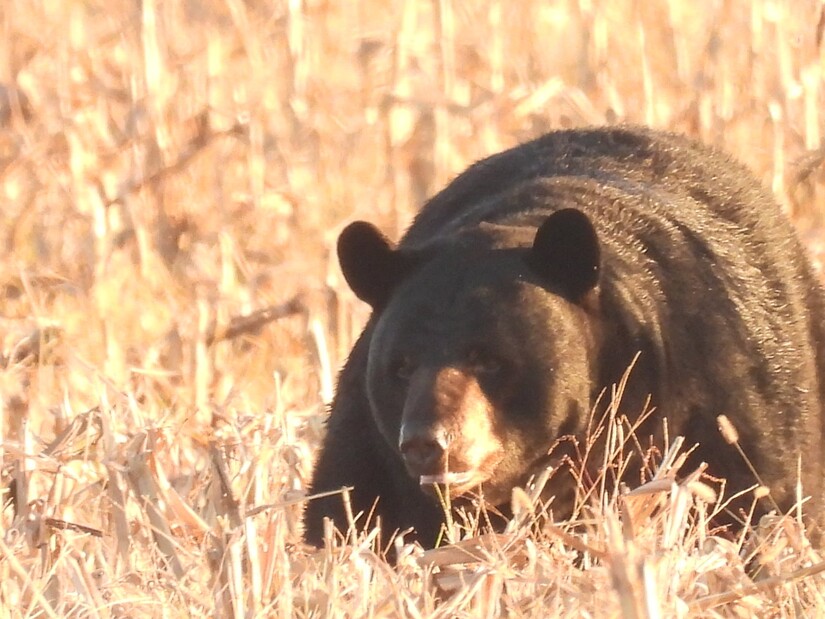
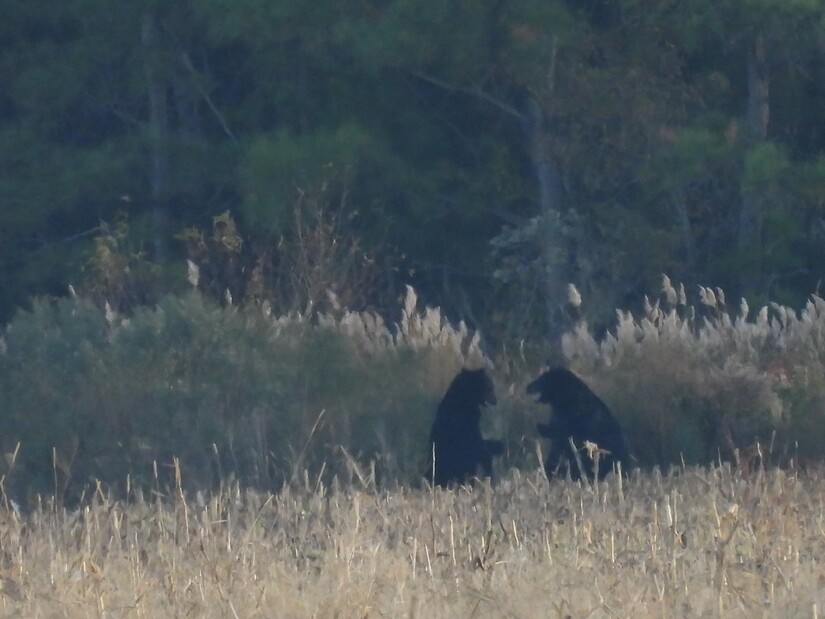
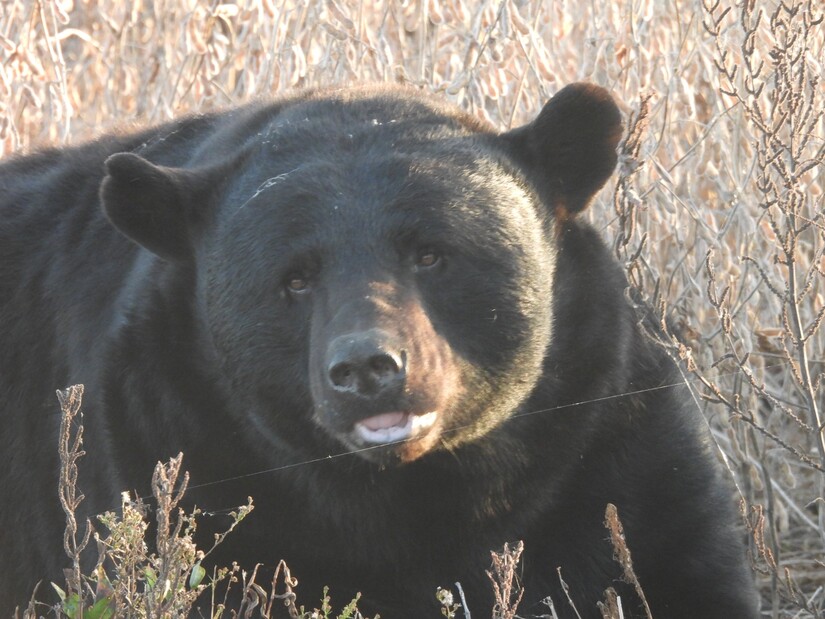
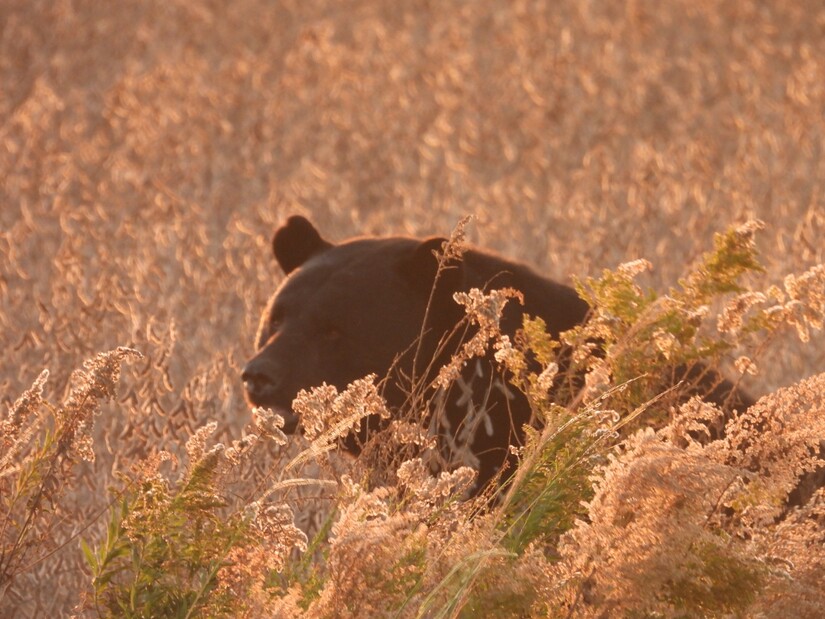
Seeing creatures as magnificent and rare as the red wolves is exhilarating and profound. Yet it’s also heartbreaking. Red wolves have not been saved in the wild. No conservation groups are claiming victory on their recovery. The survival of this red wolf pack remains tenuous. They remain a couple of car strikes or a handful of poachers away from collapse.
* Michael Strzelecki is a 1981 graduate of Boyertown Area Senior High School and a freelance travel and outdoors writer. He writes from his home in Baltimore, Maryland. He is author of Baltimore With Children and Urban Hikes in and Around Baltimore. His work has also appeared in the Baltimore Sun, Baltimore's Child, Running Times, Trail Runner, Ultrarunning, and Pennsylvania. He recently retired after a career as an analyst in energy regulation, on Capitol Hill, in Washington, DC.